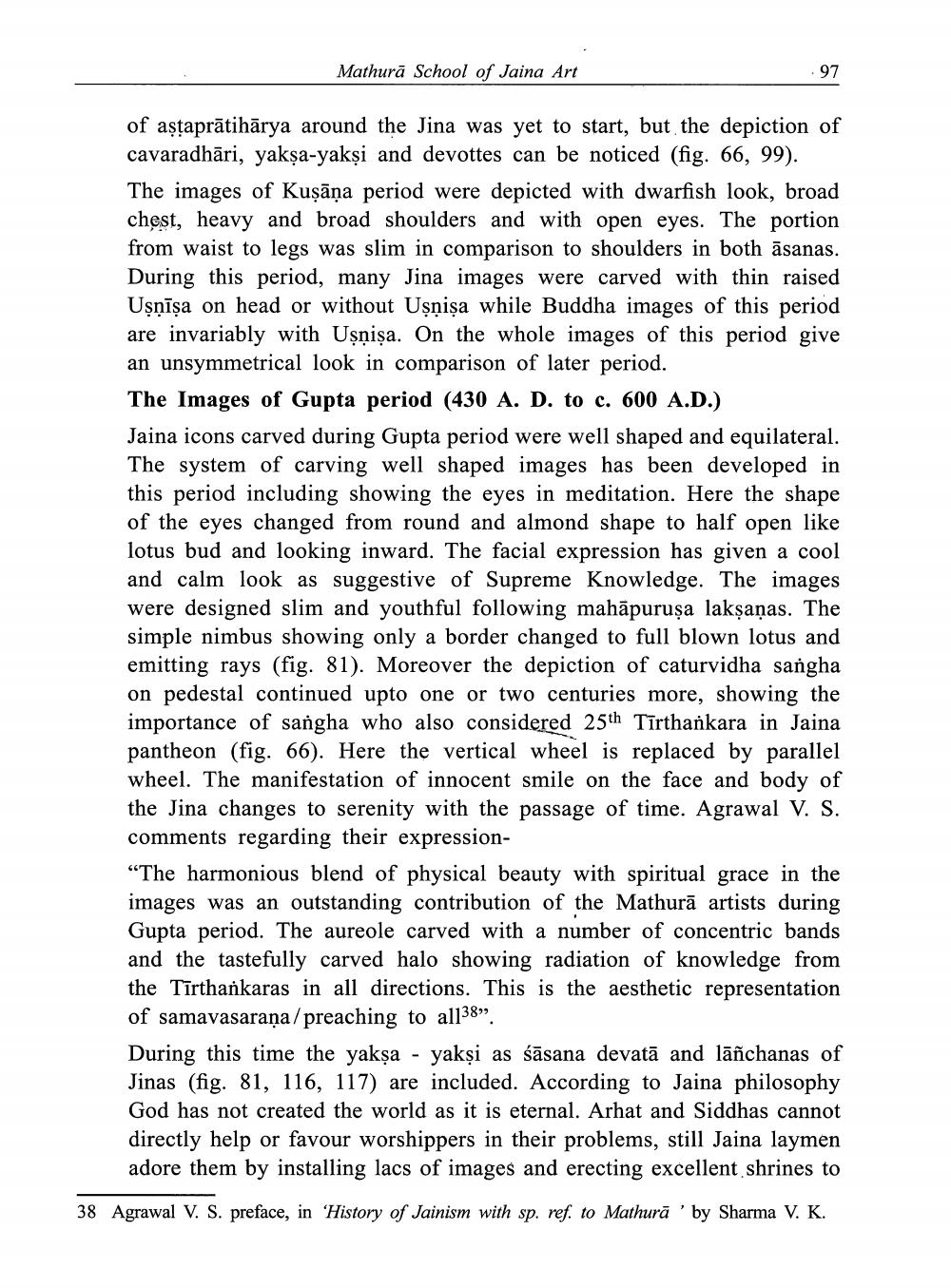________________
Mathurā School of Jaina Art
of aştaprātihārya around the Jina was yet to start, but the depiction of cavaradhāri, yakşa-yakşi and devottes can be noticed (fig. 66, 99). The images of Kuşāņa period were depicted with dwarfish look, broad chest, heavy and broad shoulders and with open eyes. The portion from waist to legs was slim in comparison to shoulders in both asanas. During this period, many Jina images were carved with thin raised Uşnīşa on head or without Uşnişa while Buddha images of this period are invariably with Uşnişa. On the whole images of this period give an unsymmetrical look in comparison of later period. The Images of Gupta period (430 A. D. to c. 600 A.D.) Jaina icons carved during Gupta period were well shaped and equilateral. The system of carving well shaped images has been developed in this period including showing the eyes in meditation. Here the shape of the eyes changed from round and almond shape to half open like lotus bud and looking inward. The facial expression has given a cool and calm look as suggestive of Supreme Knowledge. The images were designed slim and youthful following mahāpurușa lakṣaṇas. The simple nimbus showing only a border changed to full blown lotus and emitting rays (fig. 81). Moreover the depiction of caturvidha sangha on pedestal continued upto one or two centuries more, showing the importance of sangha who also considered 25th Tīrthankara in Jaina pantheon (fig. 66). Here the vertical wheel is replaced by parallel wheel. The manifestation of innocent smile on the face and body of the Jina changes to serenity with the passage of time. Agrawal V. S. comments regarding their expression“The harmonious blend of physical beauty with spiritual grace in the images was an outstanding contribution of the Mathurā artists during Gupta period. The aureole carved with a number of concentric bands and the tastefully carved halo showing radiation of knowledge from the Tīrthankaras in all directions. This is the aesthetic representation of samavasaraņa/preaching to all38”. During this time the yaksa - yakşi as śāsana devatā and lāñchanas of Jinas (fig. 81, 116, 117) are included. According to Jaina philosophy God has not created the world as it is eternal. Arhat and Siddhas cannot directly help or favour worshippers in their problems, still Jaina laymen adore them by installing lacs of images and erecting excellent shrines to
38 Agrawal V. S. preface, in 'History of Jainism with sp. ref. to Mathurā 'by Sharma V. K.




